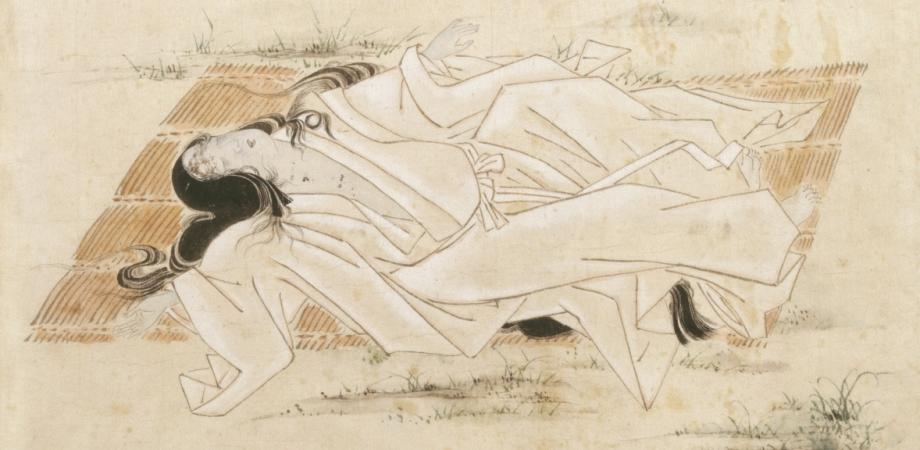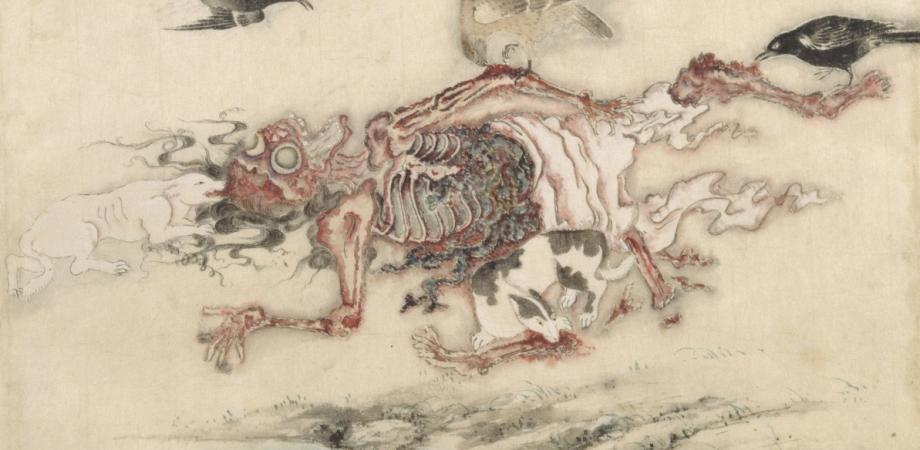
Series of paintings The nine contemplations on the impurity of the human body
Kinugasa Morishige or a copy by an unknown maker from the late Edo period
Japan, presumably Kyoto, around 1670-1680 or around 1750-1868
Ink and pigment on paper
MAS, AE.4552
Bequest from Max Elskamp, 1932
A woman in ‘twelve-layered’ court clothing (jūnihitoe) is looking ahead. Her kimonos, worn over one another, form a colourful cascade of sleeve edges. Her long hair falls over her shoulders and her forehead is adorned with painted eyebrows high up. She was probably modelled upon the poetess Ono no Komachi (around 825-900), who is still known in Japan for her legendary beauty.
Meditating on death
The Buddhist series of paintings The nine contemplations on the impurity of the human body depicts how finite the human body is. In the first painting, you can see a young woman in court clothing from the Heian period (794-1185). The next paintings show her body decomposing after her death. Monks used series like this as an aid to their meditation. They confronted them with impermanence and were also intended to suppress their desires for a woman. A poem in classical Chinese accompanies each painting and the series concludes with a Japanese afterword on how finite life is. (The print of the seventh phase is not there or no longer there. The accompanying poem has been preserved, however.)
The series' provenance raises its importance. The Antwerp poet and lawyer Max Elskamp bought them after their previous owner, the Paris art critic and collector Philippe Burty (1830-1890), died. This makes The nine contemplations an illustration of the popularity of Japanese art and culture among artists and collectors in Paris and Antwerp in the late 19th and early 20th century.

First contemplation: just died

Fifth contemplation: devoured

Ninth contemplation: the old graves



